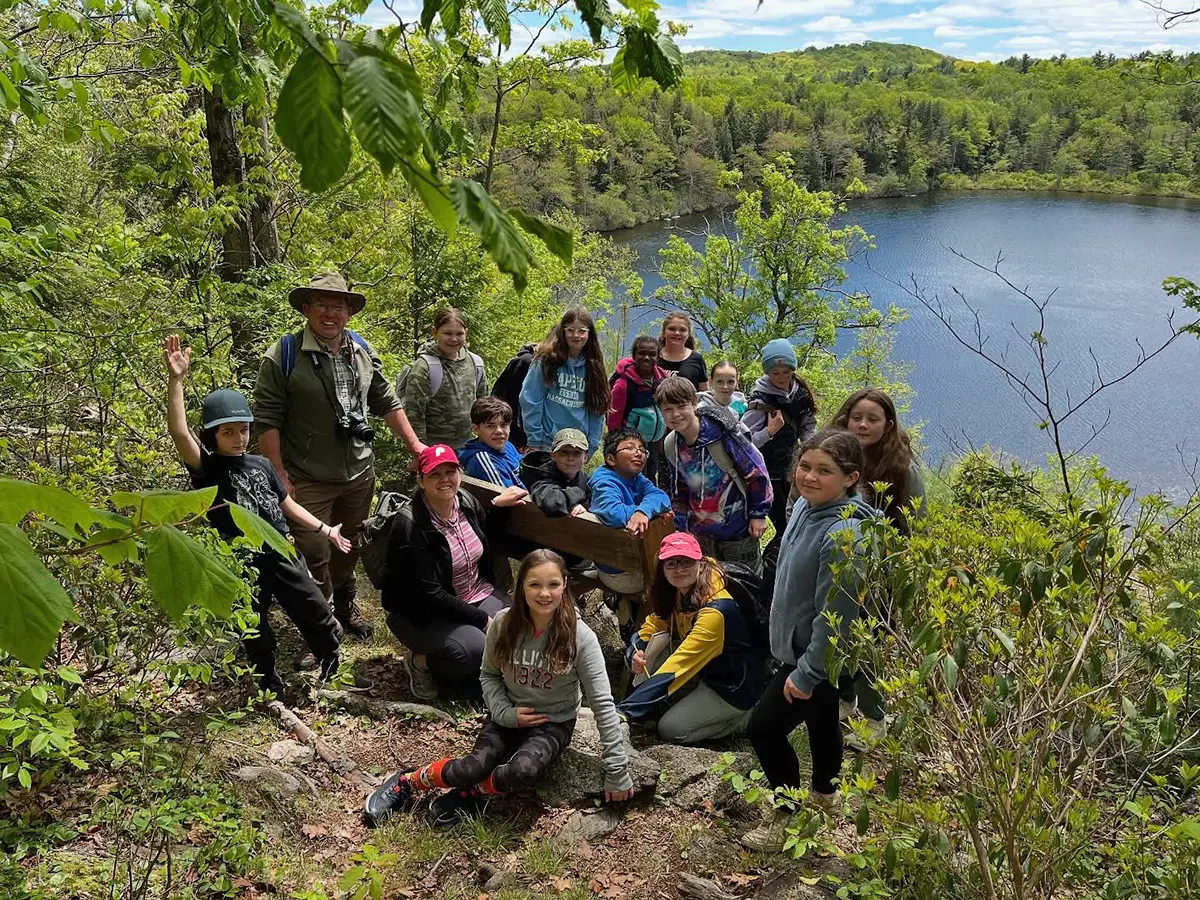Wildlife Trackers- Surveying Biodiversity in GMF

Most Prevalent Themes:
- Analyzing Ecosystem Interactions MS-LS2-2
- Understanding Biodiversity and Habitat Health MS-LS2-1
- Studying Adaptations and Survival Strategies MS-LS1-4
- Applying Scientific Practices Through CER Science & Engineering Practices (SEP)
- Exploring Human Impact and Conservation MS-LS2-5
Audience:
Middle School (adaptable to elementary and high school)
Duration:
2 ½ hours
Extensions:
CSI Skull Detectives: From Form to Function in Animal Adaptations- 90 minutes
Description
Step into the role of a wildlife detective! In this hands-on field adventure, students explore Great Mountain Forest’s rich habitats to uncover the hidden lives of local animals. They’ll search for invertebrates and decomposers, tracks, scat, nests, and other signs, practice listening and observation and data collection, and use the CER (Claim–Evidence–Reasoning) framework to explain their discoveries. Along the way, they’ll investigate food webs, explore biodiversity, and reflect on the connections between wildlife and human impact. Perfect for curious minds ready to connect science skills with real-world ecosystems, this program blends outdoor exploration, teamwork, and critical thinking—right in the heart of Connecticut’s forests.
Learning Intentions:
By the end of the session, students will be able to:
- Identify signs of wildlife through tracks, scat, calls, nests, and markings.
- Understand local wildlife habitats and adaptations.
- Practice field science techniques: observation, journaling, and data collection.
- Reflect on the role of biodiversity and human impact.

